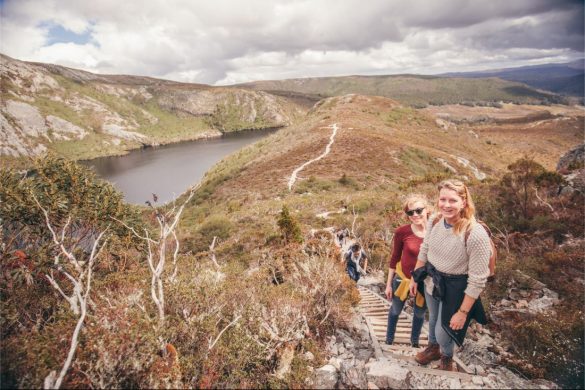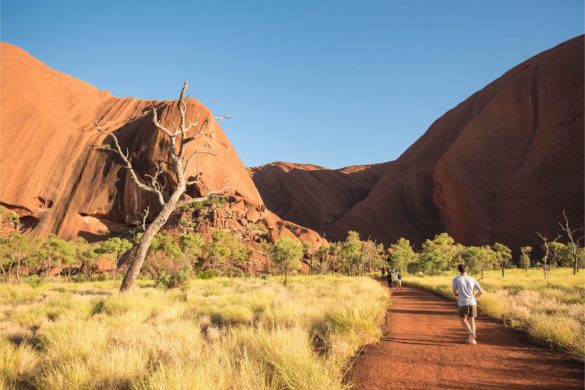The Top End of Australia, with its dramatic landscapes, rich cultural heritage, and diverse wildlife, is a region that comes alive in starkly different ways during the Wet and Dry Seasons. From the billabongs and waterfalls of Kakadu National Park to the sun-drenched splendor of Litchfield and the iconic Arnhem Land, the Top End offers many experiences year-round. Understanding the contrasts between the Wet Season and the Dry Season can help you decide the best time to visit and make the most of your adventure in this extraordinary part of Australia.
The Wet Season: November to April
The Wet Season, running from November to April, transforms the Top End into a lush, vibrant landscape, teeming with life and bursting with color. This period, also known as the Green Season, is marked by heavy rainfall, high humidity, and impressive thunderstorms.
Weather and Conditions
During the Wet Season, temperatures typically range from 25°C (77°F) to 33°C (91°F), accompanied by high humidity. The frequent tropical storms bring significant rainfall, which can lead to swollen rivers, flooded roads, and an abundance of water across the landscape. This dramatic change breathes new life into the region, creating a dynamic and ever-changing environment.
Highlights of Visiting During the Wet Season
- Stunning Scenery: The heavy rains rejuvenate the land, turning the arid landscapes into verdant oases. Waterfalls like Jim Jim Falls in Kakadu National Park flow with renewed vigor, offering breathtaking sights.
- Cultural Experiences: The Wet Season is significant for the Indigenous communities of the Top End. This period offers unique opportunities to engage with First Nations culture through managed intercultural exchanges, particularly in Kakadu National Park, where you can learn about traditional practices and stories.
- Tranquility: With fewer tourists compared to the Dry Season, you can enjoy a more intimate and serene experience at popular sites.
- Wildlife Watching: The increased water levels attract a variety of wildlife. Crocodiles patrol the waters of Corroboree River, roos bounce about the bushlands, and an array of bird species flock to the wetlands, making for excellent wildlife viewing opportunities.
The Dry Season: May to October
Weather and Conditions
The Dry Season, from May to October, is the most popular time to visit the Top End. Characterized by clear skies, lower humidity, and comfortable temperatures, this period is ideal for outdoor activities and exploration.
During the Dry Season, temperatures range from 17°C (63°F) to 31°C (88°F), with minimal rainfall and lower humidity. The consistent weather conditions create a stable environment for travel, with most roads and attractions remaining accessible throughout the season.
Highlights of Visiting During the Dry Season
- Ideal Weather: The mild temperatures and clear skies make it perfect for outdoor adventures. Whether you’re hiking through Kakadu National Park, embarking on a Litchfield 4WD adventure, or soaking up the sun in Katherine, the weather is generally pleasant and predictable.
- Event Season: The Dry Season coincides with a variety of cultural festivals and events in the Top End. The Darwin Festival, for example, showcases local art, music, and performances, providing a vibrant cultural experience.
- Wildlife Viewing: As water sources dwindle, wildlife congregates around the remaining billabongs, making it easier to spot animals such as crocodiles, wallabies, and a diverse range of bird species.
- Accessibility: With dry conditions, most roads and tracks are open, allowing for easy access to remote areas and attractions. This makes the Dry Season perfect for exploring hidden gems and off-the-beaten-path destinations without worrying about road closures or difficult terrain.
- Comfortable Exploration: The lower humidity and cooler temperatures during the Dry Season mean you can comfortably explore the outdoors all day long. Whether you’re trekking through ancient rainforests, enjoying a cruise on the Yellow Water Billabong, or camping under the stars, the pleasant weather enhances every experience.
- Uninterrupted Views: The clear skies of the Dry Season offer unobstructed views of the stunning landscapes and night skies. Sunrise and sunset photography, stargazing, and scenic flights are all more enjoyable without the interference of clouds or rain.
When to Visit: A Season-by-Season Guide
Deciding when to visit the Top End depends on your preferences and what you hope to experience during your trip. Here’s a breakdown of the highlights for each season:
November to April (Wet Season)
- Lush Landscapes: If you’re drawn to the sight of lush, green scenery, the Wet Season is ideal. The rejuvenated landscapes offer a stark contrast to the arid environment of the Dry Season.
- Cultural Insights: For those interested in Indigenous culture, the Wet Season offers a unique opportunity to learn about traditional practices and ceremonies that are tied to the seasonal changes.
- Wildlife Encounters: Bird enthusiasts will find the wetlands teeming with life, while crocodiles are more active in the swollen rivers.
May to October (Dry Season)
- Outdoor Activities: If you’re keen on hiking, camping, and exploring the national parks, the Dry Season’s stable weather makes it the best time for these activities.
- Festivals and Events: The Dry Season is the time for festivals and events, offering a chance to immerse yourself in the local culture and enjoy the region’s vibrant social scene.
- Wildlife Spotting: With wildlife congregating around water sources, this season offers excellent opportunities for spotting a variety of animals in their natural habitats.
- Waterfalls and remote attractions: With dry conditions, most roads and tracks are open, allowing for easy access to remote areas, waterfalls and attractions.
Practical Tips for Visiting the Top End
Regardless of when you choose to visit, here are some practical tips to help you prepare for your trip to the Top End:
- Plan Ahead: Especially during the peak Dry Season, book any flights or any additional accommodation well in advance to secure the best options and prices.
- Stay Hydrated: The tropical climate can be unforgiving. Always carry plenty of water, wear sunscreen, and take breaks in the shade.
- Respect Wildlife: The Top End is home to a variety of wildlife, including saltwater crocodiles. Always follow safety guidelines and keep a respectful distance from animals.
- Be Prepared for Insects: Insect repellent and protective clothing are essential, particularly during the Wet Season when mosquito activity is high.
- Cultural Sensitivity: The Top End is rich in Indigenous culture. Be respectful of local customs and traditions, and seek permission before entering Aboriginal land.
Conclusion
The Top End of Australia is a region of unparalleled natural beauty and cultural significance, offering diverse experiences depending on the season. The Wet Season brings dramatic landscapes, cultural insights, and a sense of renewal, while the Dry Season provides ideal conditions for outdoor adventures, wildlife viewing, and vibrant festivals. By understanding the characteristics of each season and planning accordingly, you can make the most of your visit to this extraordinary part of the world. Whether you’re chasing waterfalls in the lush Wet Season, exploring the sun-drenched landscapes of the Dry Season, the Top End promises an unforgettable journey filled with awe-inspiring sights and enriching experiences.
Plan your dream trip to the Top End with Adventure Tours Australia. Check out our 3 Day Kakadu & Litchfield Adventure, Kakadu, Arnhem Land, Katherine & Litchfield Adventure, or 5 Days 4WD Kakadu & Koolpin Adventure to start planning your trip today










